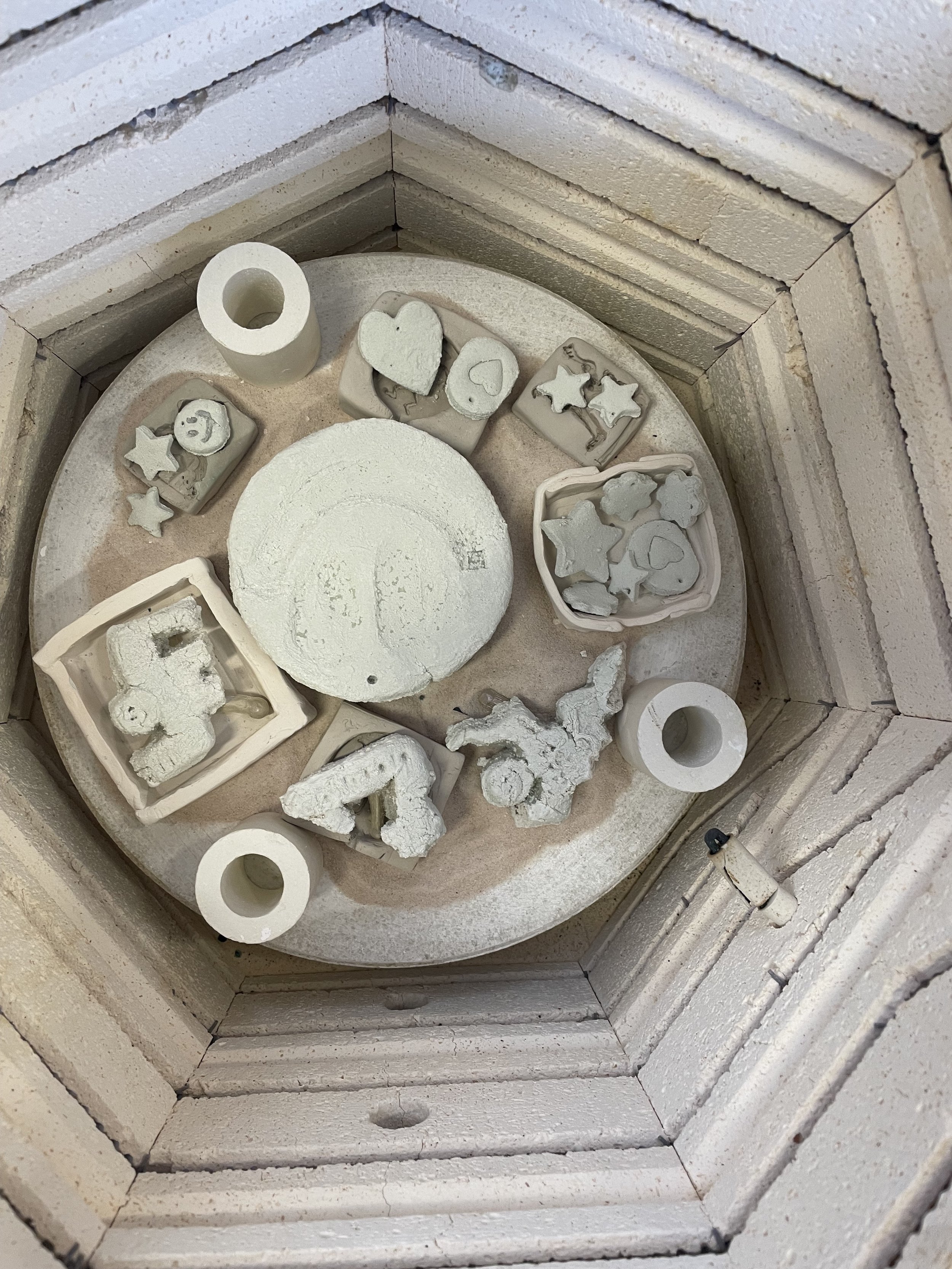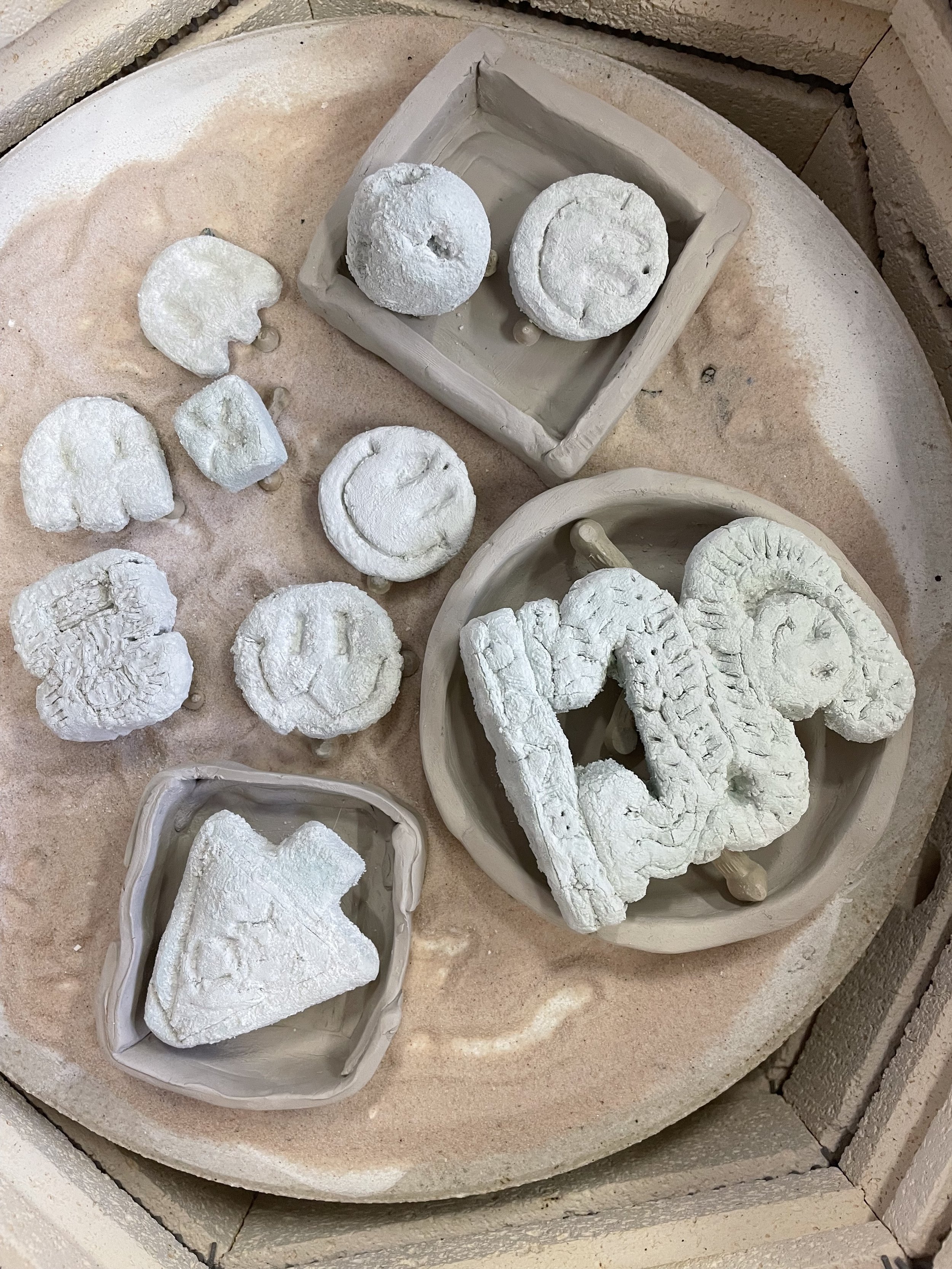Here are a few working shots of some of recent work in progress associated with two early forms of glass-making; Pâte de Verre and Faience. I have began to experiment with these processes during my current residence at Edinburgh Sculpture Workshop. I am planning to create a series of objects which are non-functional ceremonial pieces; for example, a glass bucket hat, a large glass glow stick, as well as ornate costume jewellery and headdresses used to adorn practitioners in ritual. These items will be decorated with dancing figures, smiley motifs, and other symbols which hint at the mythology of a lost civilisation of Rave.
Faience is considered the earliest form of glass-making; this self-glazing ceramic dates back to the fifth millennium B.C. and is commonly found in many archaeological collections from Ancient Egypt. This material has been discovered on excavated Bronze Age sites, and has connections with ‘The Beaker Folk’, who were new settlers to Britain that brought a distinctive style of pottery, metalworking, luxury overseas goods, and whose religious rites are thought to have involved intoxication.
The process of Pâte de Verre allows for thinly walled objects to be constructed using a paste created from powdered glass; and the resulting pieces will be lit from within when exhibited, which resonates with the Egyptian belief that glass and faience were other-worldly creations, and that this distinctive, vibrant blue material was considered magical due to its inherent shimmer and glow.
In the constructing Rave’s artefact assemblage, I will draw from ideas of costuming within ritual practice, with reference to the various uniforms of music cultures. Items from 90s Rave fashion, festival attire, and ‘KANDI’ jewellery used in gift exchange rituals within the contemporary rave scene have been considered alongside the material remains of the sacred practices of The Beaker People.







